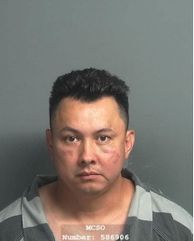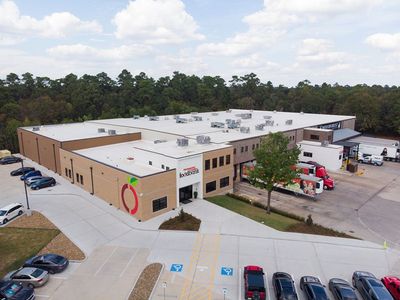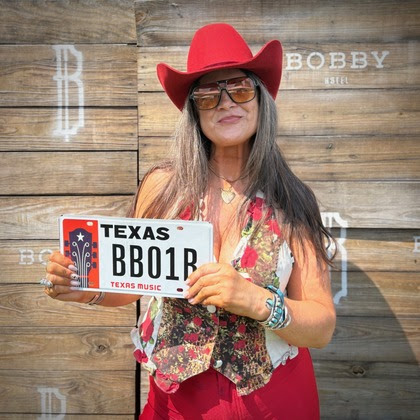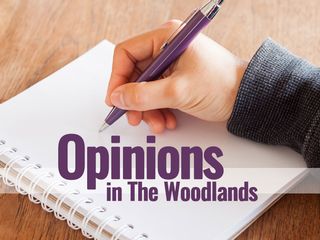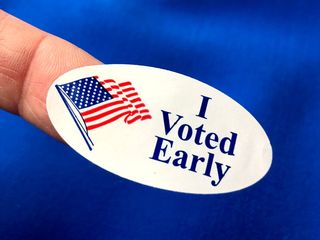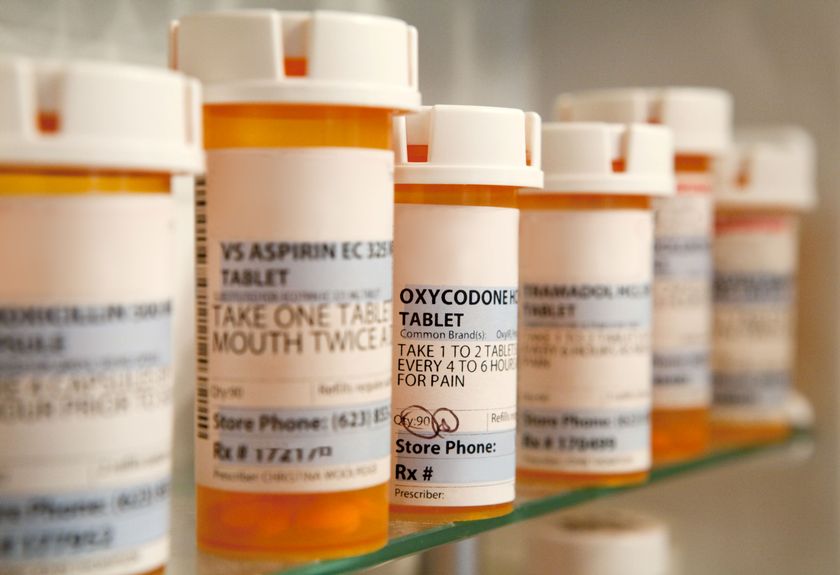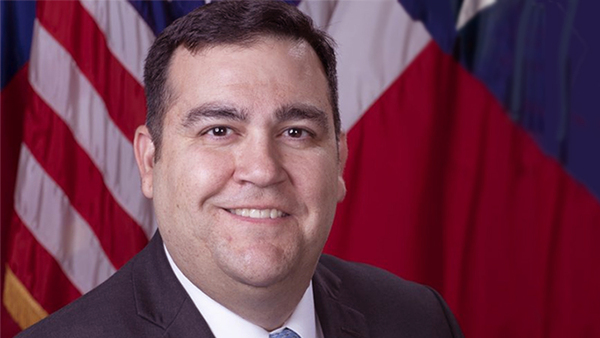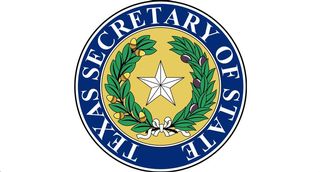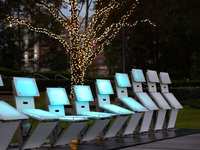- Sections :
- Crime & Public Safety
- Restaurants & Food
- Sports
- More
Categories
From Nuclear Fallout Bunker To High Tech Data Center: Montgomery County’s Secret Bomb Shelter Turned Technology Networking Epicenter
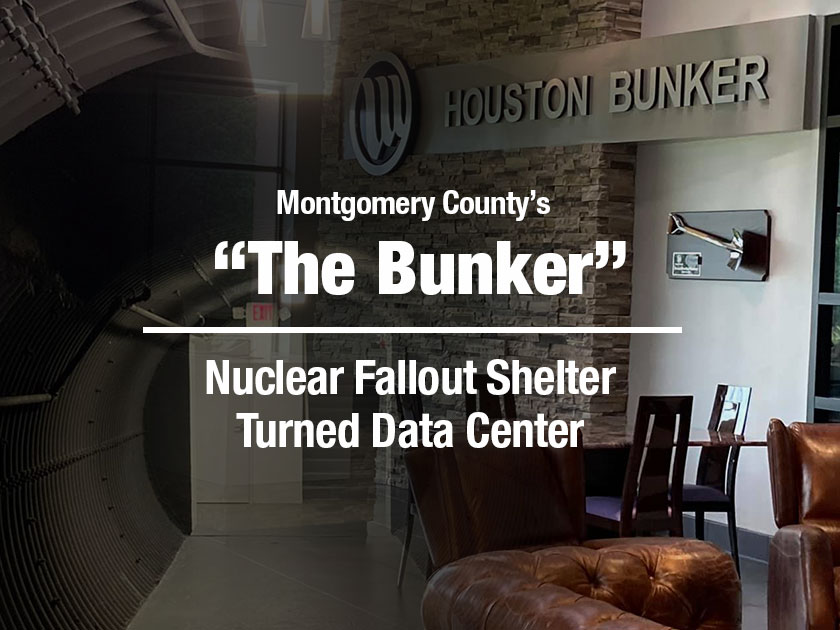
During the Cold War, individuals, companies and government agencies built fallout shelters to protect themselves from possible nuclear attacks. Some of these bomb shelters were smaller, simpler backyard or basement bunkers, but many of them were larger, elaborate structures capable of housing hundreds, even thousands of people and could withstand large megaton blasts. Fallout shelters became popular after World War II in the 1950s with the tension between the United States and the Soviet Union. It ended in 1991 when the Soviet Union collapsed and was replaced by 15 independent countries including Armenia, Russia and Ukraine. After the Cold War was over though, there was a question regarding what to do with those unused shelters. They have been converted into everything from night clubs, restaurants and event spaces to luxury apartments, movie theaters and even subterranean farms. When the US Government decommissioned several underground missile silos around the country, some were flooded and many were turned into popular underwater destinations for adventurous scuba divers. It was a fascinating piece of US history that reached deep into our local community.
The possibility of being attacked created a fear in the hearts of many Texas residents and in particular, an oil entrepreneur named Ling-Chieh Kung of Montgomery.
Click here to see our photo gallery of the Westland Bunker
Ling-Chieh Kung built his company headquarters for Westland Oil in Montgomery in the early 1980s, but what most people didn’t know back then was that he also build an elaborate 40,000 square foot underground nuclear fallout bunker. That unique bunker years later would be converted into a world-class data center known as “The Westland Bunker”.
The average Montgomery resident has never heard this story. It is one of those little gems of history that can only be found in Montgomery County.
About Ling-Chieh Kung
Ling-Chieh Kung was the nephew of Madame Chiang Kai-shek, the First Lady of the Republic of China. His wife was Debra Paget, a well known actress that played the love interest of Elvis Presley in the 1956 western, Love Me Tender, as well as the water girl, Lilia in the Cecil B. DeMille movie The Ten Commandments. Kung started an oil company in 1961 called Westland Oil Development Corp and decided to build his headquarters in Texas, specifically in the small rural town of Montgomery. In the late 1970s he purchased 500 acres of land and started work on the new home of Westland Oil. During the next few years, Kung would build a new 87,000 square foot, 4-story headquarters building. Although many people knew that he was building a new corporate building, most people didn’t know that he was also building a 40,000 square foot underground nuclear fallout bunker. That latter project would become the stepping stone and catalyst that opened opportunities for Jymme Gomez, the owner of the Westland Data Center.
Some of the reasons why Kung built the bunker is still up for debate. What is known though is that he might have feared a possible nuclear attack or maybe the breakdown of civilization and decided that he wanted to protect himself, his family and his employees. It has been mentioned more than once that he seemed to care a great deal about his employees and many of the amenities he built into his structures was to help make the campus of Westland Oil a comfortable place for his employees to work and live. By 1982, he would complete the construction of his nuclear bunker. The structure he built was well-designed and could withstand anything that might come to pass. Kung and his wife lived on the fourth floor of the office building, and also had an additional residence in the City of Conroe.
About Ling-Chieh Kung’s 40,000 Square Foot Nuclear Bunker
There were always rumors circulating about what actually was being built on Kung’s property. Some local residents thought it might be a bomb shelter. Some thought there was a shopping center of sorts being built on the land. One person thought that the underground area was being developed for the Chinese Consulate. These are all rumors of course and with trucks, machinery and people coming too and from the property, it was only a matter of time before people started speculating about the extent and purpose of his building project. Kung owned hundreds of acres in Montgomery. The corporate office and bunker is situated off of HWY 105, right behind the KOA Campground. The property that the campground is currently on was also part of the original 500 acres. The Hilltop Ranch area was also part of his property as well. Today, the new company that owns The Bunker rests on about 51 acres of land with around 31 acres still undeveloped.
Kung designed the underground bunker to address longterm community issues. He created areas to store food, water, fuel and medical supplies as well as other necessities. It was envisioned as a safe facility for a few hundred people for an extended period of time. He had dreamed of saving his family, his employees and their own families in the event of a nuclear attack. We are not sure ultimately how many people the facility could house. There have been estimates ranging from 350 people to 1,500 people for a period of a few months. We are inclined to believe that the number was closer to 350, but again, we couldn’t get confirmation on the exact number. Because this was considered a community or underground city, Kung also needed to address other ongoing community concerns. For example, the bunker had a surgery center in the event of medical emergencies as well as an actual jail. This wasn’t a small after thought either. These jail units were well-built rooms, lined with steel and strengthened to hold whoever needed to be held away from the general population. There was an onsite morgue to address deaths with an ample supply of bodybags. There were decontamination showers to make sure that people entering the facility were clean. This structure was built to withstand nuclear, biological and chemical attacks. For overnight accommodations, there were rooms filled with triple-bunk beds. These rooms could sleep over a hundred people to an area. There wasn’t much privacy in the bunkers, so for couples, Kung also built 13 conjugal rooms.
The design of the bunker is amazing. It has a 27 inch concrete roof. The walls are concrete as well and range from 2 to 6 feet in depth. There are machine gun mounts included in the structure. There are two pagodas that are reinforced that include small doors that can be slid back to expose a gun to help protect the bunker. There are at least 10 gun ports in the main bunker as well. If you don’t know what a pagoda is, pagodas are small buildings or structures with curved roofs, popular in Japan, Korea and China. They are religious type buildings and were used as temples or memorials. Kung built two small pagodas to hide the entrances into the bunker. A person could enter the pagodas to access the bunker stairwells. When we toured the structure, we were told that during the last hurricane, the curved roofs were ripped off the pagodas and were replaced with new flat roofs instead. They previously had a small pond on the property. Back when Kung owned the buildings, the pond was built on top of the bunker. It was placed there as a diversionary tactic. If a plane traveled overhead, no one suspected a bunker underneath the pond. That pond has since been filled in.
It was thought that Kung spent millions of dollars building the headquarters as well as the underground nuclear bunker. There are some that believe that he spent most of, if not all of his fortune on it. In the late 1980’s when the country was experiencing an oil bust, Westland Oil Development Corporation ended up filing for bankruptcy and Kung lost the title to his property. He had to let go of the bunker that he had spent so much time and effort in building. The property has been purchased and sold again and later in 2007 it was purchased by a new company called Westland. This company decided to convert the underground bunker into a state-of-the-art data center. It would become one of the most secure data centers in the country. It was an ambitious project and was led by a successful women from the Dallas/Fort Worth area by the name of Jymme Gomez.
About the Westland Data Center
We met with the owner of Westland, Jymme Gomez to talk about her popular and unique data center, dubbed, “The Westland Bunker”. She purchased the facility back in 2007. Mrs. Gomez was already a successful entrepreneur, having developed multiple companies and even selling three to a Houston infrastructure company. She has a background in networking and sales at Southwestern Bell/AT&T and Bell Laboratories. The data center co-location world was a natural transition for Mrs. Gomez. In retirement, Jymme was approached by a real estate group from Dallas to look at a potential property in Montgomery. They wanted her to assess if whether or not an old, abandoned nuclear bunker could be converted into a modern, co-location data center. Mrs. Gomez mentioned that she had never even heard of Montgomery until she was asked to look at the bunker. We were given an extensive tour of the property and it is absolutely amazing. The 4-story corporate headquarters was renovated and brought up to modern standards. The bunkers needed to be restored all the way back to the walls,. Everything was upgraded. They did a great job in not only making the facility look great, but they structured the buildings for maximum functionality. In addition to upgrading the 87,000, 4-story corporate building and the 40,000 square foot underground bunker, in 2016, they also built an additional 2-story, 108,000 square foot facility for data center growth. The top floor is above ground and the bottom floor is underground, similar to the original nuclear bunker. The top floor also includes areas for administrative offices, kitchens, a laundry room, a game room as well as a visitors center and an overnight apartment. There is also an exercise room as well as a conference room.
The tour took about an hour to complete and we viewed most areas of the property while there. We started the tour walking through the first floor of the newly constructed building. Mrs. Gomez has an amazing office and her taste in some of the design aspects of the building was a treat to see. We have never seen so many unique and complimenting light fixtures. We could do a separate photo gallery just on the lighting fixtures alone. The fixtures were different for each area and they were also unique and beautiful. We were led over to the 4-story structure. We were told that their business comprised a vast array of clients including many oil companies, telecoms and school districts as well small independent businesses. The Westland Bunker also leases server space to individuals as well.
One thing that we thought was interesting and probably something Mr. Kung would appreciate was the need for Westland to store food and supplies for personnel in case of emergencies. Keeping servers and facilities running smoothly requires personnel on site and in the case of extreme events, those individuals might be required to stay on campus for an extended period of time. To accommodate those workers, Westland keeps enough food on hand to feed 200 people for a period of 60 days. One of the most impressive areas of the tour was the building that houses their data center generators. They pipe in a massive amount of electricity and these generators are a critical part of maintaining power in the case of a breakdown in electrical service. We included pictures of these generators in the following photo gallery. We really enjoyed the tour and was introduced to a few areas that seemed like extra perks on the campus. Mr. Kung built a restaurant and a company bar. He also created a dance area, a club as well as an area for kids. There was a large pool and fountain outside of the facility as well. This is in addition to the onsite apartment and exercise room. The campus was setup with the comfort of employees in mind. It is a peaceful campus with beautiful buildings and grounds. Mr. Kung used the main corporate building to host banquets and other events. Westland mentioned that they also host events. Recent events include political gatherings for Greg Abbott and Allen West.
The Future of the Westland Bunker
We asked several questions about the future of the Westland Data Center. Those questions included how they planned to grow their company and how much space was available for new data center operations. Earlier we toured their new 108,000 square foot building that was constructed in 2016. This new building offered 50,000 square feet of usable data center space. In the tour, we were also shown how much redundancy they implement to further the continuity of operations. From redundant servers and power distribution to replacing UPS units and generators, every aspect of focusing on uptime was put into place.
What is interesting about the old bunker that Mr. Kung built was that it was never used for the purposes it was intended for. The facility was completed, but due to unforeseen circumstances it was later sold to another company never having fulfilled its purpose. The medical supplies the bunker stored were gathered together and sent to charitable organizations and the interior was gutted and repurposed. The showers that were intended for hundreds of people is now a facility for data center clients. The jail cells are still in tact and still on campus. The intent of the bunker may have been to keep things local and away from the world, but the rebirth of the bunker has fulfilled purposes that Ling-Chieh Kung probably could never imagine. Jymme Gomez and the Westland Data Center helps thousands of people from around the world based in a facility initially intended to shield people from the world. A project initially intended to make the bunker the most disconnected place in Montgomery, opened the door to making The Bunker the most connected place not only in Montgomery, but in most of Texas. It really is a great piece of Montgomery County history.
• Click here to see our photo gallery of the Westland Bunker
• Click here to view the Westland Bunker Website
The possibility of being attacked created a fear in the hearts of many Texas residents and in particular, an oil entrepreneur named Ling-Chieh Kung of Montgomery.
Click here to see our photo gallery of the Westland Bunker
Ling-Chieh Kung built his company headquarters for Westland Oil in Montgomery in the early 1980s, but what most people didn’t know back then was that he also build an elaborate 40,000 square foot underground nuclear fallout bunker. That unique bunker years later would be converted into a world-class data center known as “The Westland Bunker”.
The average Montgomery resident has never heard this story. It is one of those little gems of history that can only be found in Montgomery County.
About Ling-Chieh Kung
Ling-Chieh Kung was the nephew of Madame Chiang Kai-shek, the First Lady of the Republic of China. His wife was Debra Paget, a well known actress that played the love interest of Elvis Presley in the 1956 western, Love Me Tender, as well as the water girl, Lilia in the Cecil B. DeMille movie The Ten Commandments. Kung started an oil company in 1961 called Westland Oil Development Corp and decided to build his headquarters in Texas, specifically in the small rural town of Montgomery. In the late 1970s he purchased 500 acres of land and started work on the new home of Westland Oil. During the next few years, Kung would build a new 87,000 square foot, 4-story headquarters building. Although many people knew that he was building a new corporate building, most people didn’t know that he was also building a 40,000 square foot underground nuclear fallout bunker. That latter project would become the stepping stone and catalyst that opened opportunities for Jymme Gomez, the owner of the Westland Data Center.
Some of the reasons why Kung built the bunker is still up for debate. What is known though is that he might have feared a possible nuclear attack or maybe the breakdown of civilization and decided that he wanted to protect himself, his family and his employees. It has been mentioned more than once that he seemed to care a great deal about his employees and many of the amenities he built into his structures was to help make the campus of Westland Oil a comfortable place for his employees to work and live. By 1982, he would complete the construction of his nuclear bunker. The structure he built was well-designed and could withstand anything that might come to pass. Kung and his wife lived on the fourth floor of the office building, and also had an additional residence in the City of Conroe.
About Ling-Chieh Kung’s 40,000 Square Foot Nuclear Bunker
There were always rumors circulating about what actually was being built on Kung’s property. Some local residents thought it might be a bomb shelter. Some thought there was a shopping center of sorts being built on the land. One person thought that the underground area was being developed for the Chinese Consulate. These are all rumors of course and with trucks, machinery and people coming too and from the property, it was only a matter of time before people started speculating about the extent and purpose of his building project. Kung owned hundreds of acres in Montgomery. The corporate office and bunker is situated off of HWY 105, right behind the KOA Campground. The property that the campground is currently on was also part of the original 500 acres. The Hilltop Ranch area was also part of his property as well. Today, the new company that owns The Bunker rests on about 51 acres of land with around 31 acres still undeveloped.
Kung designed the underground bunker to address longterm community issues. He created areas to store food, water, fuel and medical supplies as well as other necessities. It was envisioned as a safe facility for a few hundred people for an extended period of time. He had dreamed of saving his family, his employees and their own families in the event of a nuclear attack. We are not sure ultimately how many people the facility could house. There have been estimates ranging from 350 people to 1,500 people for a period of a few months. We are inclined to believe that the number was closer to 350, but again, we couldn’t get confirmation on the exact number. Because this was considered a community or underground city, Kung also needed to address other ongoing community concerns. For example, the bunker had a surgery center in the event of medical emergencies as well as an actual jail. This wasn’t a small after thought either. These jail units were well-built rooms, lined with steel and strengthened to hold whoever needed to be held away from the general population. There was an onsite morgue to address deaths with an ample supply of bodybags. There were decontamination showers to make sure that people entering the facility were clean. This structure was built to withstand nuclear, biological and chemical attacks. For overnight accommodations, there were rooms filled with triple-bunk beds. These rooms could sleep over a hundred people to an area. There wasn’t much privacy in the bunkers, so for couples, Kung also built 13 conjugal rooms.
The design of the bunker is amazing. It has a 27 inch concrete roof. The walls are concrete as well and range from 2 to 6 feet in depth. There are machine gun mounts included in the structure. There are two pagodas that are reinforced that include small doors that can be slid back to expose a gun to help protect the bunker. There are at least 10 gun ports in the main bunker as well. If you don’t know what a pagoda is, pagodas are small buildings or structures with curved roofs, popular in Japan, Korea and China. They are religious type buildings and were used as temples or memorials. Kung built two small pagodas to hide the entrances into the bunker. A person could enter the pagodas to access the bunker stairwells. When we toured the structure, we were told that during the last hurricane, the curved roofs were ripped off the pagodas and were replaced with new flat roofs instead. They previously had a small pond on the property. Back when Kung owned the buildings, the pond was built on top of the bunker. It was placed there as a diversionary tactic. If a plane traveled overhead, no one suspected a bunker underneath the pond. That pond has since been filled in.
It was thought that Kung spent millions of dollars building the headquarters as well as the underground nuclear bunker. There are some that believe that he spent most of, if not all of his fortune on it. In the late 1980’s when the country was experiencing an oil bust, Westland Oil Development Corporation ended up filing for bankruptcy and Kung lost the title to his property. He had to let go of the bunker that he had spent so much time and effort in building. The property has been purchased and sold again and later in 2007 it was purchased by a new company called Westland. This company decided to convert the underground bunker into a state-of-the-art data center. It would become one of the most secure data centers in the country. It was an ambitious project and was led by a successful women from the Dallas/Fort Worth area by the name of Jymme Gomez.
About the Westland Data Center
We met with the owner of Westland, Jymme Gomez to talk about her popular and unique data center, dubbed, “The Westland Bunker”. She purchased the facility back in 2007. Mrs. Gomez was already a successful entrepreneur, having developed multiple companies and even selling three to a Houston infrastructure company. She has a background in networking and sales at Southwestern Bell/AT&T and Bell Laboratories. The data center co-location world was a natural transition for Mrs. Gomez. In retirement, Jymme was approached by a real estate group from Dallas to look at a potential property in Montgomery. They wanted her to assess if whether or not an old, abandoned nuclear bunker could be converted into a modern, co-location data center. Mrs. Gomez mentioned that she had never even heard of Montgomery until she was asked to look at the bunker. We were given an extensive tour of the property and it is absolutely amazing. The 4-story corporate headquarters was renovated and brought up to modern standards. The bunkers needed to be restored all the way back to the walls,. Everything was upgraded. They did a great job in not only making the facility look great, but they structured the buildings for maximum functionality. In addition to upgrading the 87,000, 4-story corporate building and the 40,000 square foot underground bunker, in 2016, they also built an additional 2-story, 108,000 square foot facility for data center growth. The top floor is above ground and the bottom floor is underground, similar to the original nuclear bunker. The top floor also includes areas for administrative offices, kitchens, a laundry room, a game room as well as a visitors center and an overnight apartment. There is also an exercise room as well as a conference room.
The tour took about an hour to complete and we viewed most areas of the property while there. We started the tour walking through the first floor of the newly constructed building. Mrs. Gomez has an amazing office and her taste in some of the design aspects of the building was a treat to see. We have never seen so many unique and complimenting light fixtures. We could do a separate photo gallery just on the lighting fixtures alone. The fixtures were different for each area and they were also unique and beautiful. We were led over to the 4-story structure. We were told that their business comprised a vast array of clients including many oil companies, telecoms and school districts as well small independent businesses. The Westland Bunker also leases server space to individuals as well.
One thing that we thought was interesting and probably something Mr. Kung would appreciate was the need for Westland to store food and supplies for personnel in case of emergencies. Keeping servers and facilities running smoothly requires personnel on site and in the case of extreme events, those individuals might be required to stay on campus for an extended period of time. To accommodate those workers, Westland keeps enough food on hand to feed 200 people for a period of 60 days. One of the most impressive areas of the tour was the building that houses their data center generators. They pipe in a massive amount of electricity and these generators are a critical part of maintaining power in the case of a breakdown in electrical service. We included pictures of these generators in the following photo gallery. We really enjoyed the tour and was introduced to a few areas that seemed like extra perks on the campus. Mr. Kung built a restaurant and a company bar. He also created a dance area, a club as well as an area for kids. There was a large pool and fountain outside of the facility as well. This is in addition to the onsite apartment and exercise room. The campus was setup with the comfort of employees in mind. It is a peaceful campus with beautiful buildings and grounds. Mr. Kung used the main corporate building to host banquets and other events. Westland mentioned that they also host events. Recent events include political gatherings for Greg Abbott and Allen West.
The Future of the Westland Bunker
We asked several questions about the future of the Westland Data Center. Those questions included how they planned to grow their company and how much space was available for new data center operations. Earlier we toured their new 108,000 square foot building that was constructed in 2016. This new building offered 50,000 square feet of usable data center space. In the tour, we were also shown how much redundancy they implement to further the continuity of operations. From redundant servers and power distribution to replacing UPS units and generators, every aspect of focusing on uptime was put into place.
What is interesting about the old bunker that Mr. Kung built was that it was never used for the purposes it was intended for. The facility was completed, but due to unforeseen circumstances it was later sold to another company never having fulfilled its purpose. The medical supplies the bunker stored were gathered together and sent to charitable organizations and the interior was gutted and repurposed. The showers that were intended for hundreds of people is now a facility for data center clients. The jail cells are still in tact and still on campus. The intent of the bunker may have been to keep things local and away from the world, but the rebirth of the bunker has fulfilled purposes that Ling-Chieh Kung probably could never imagine. Jymme Gomez and the Westland Data Center helps thousands of people from around the world based in a facility initially intended to shield people from the world. A project initially intended to make the bunker the most disconnected place in Montgomery, opened the door to making The Bunker the most connected place not only in Montgomery, but in most of Texas. It really is a great piece of Montgomery County history.
• Click here to see our photo gallery of the Westland Bunker
• Click here to view the Westland Bunker Website
Comments •

